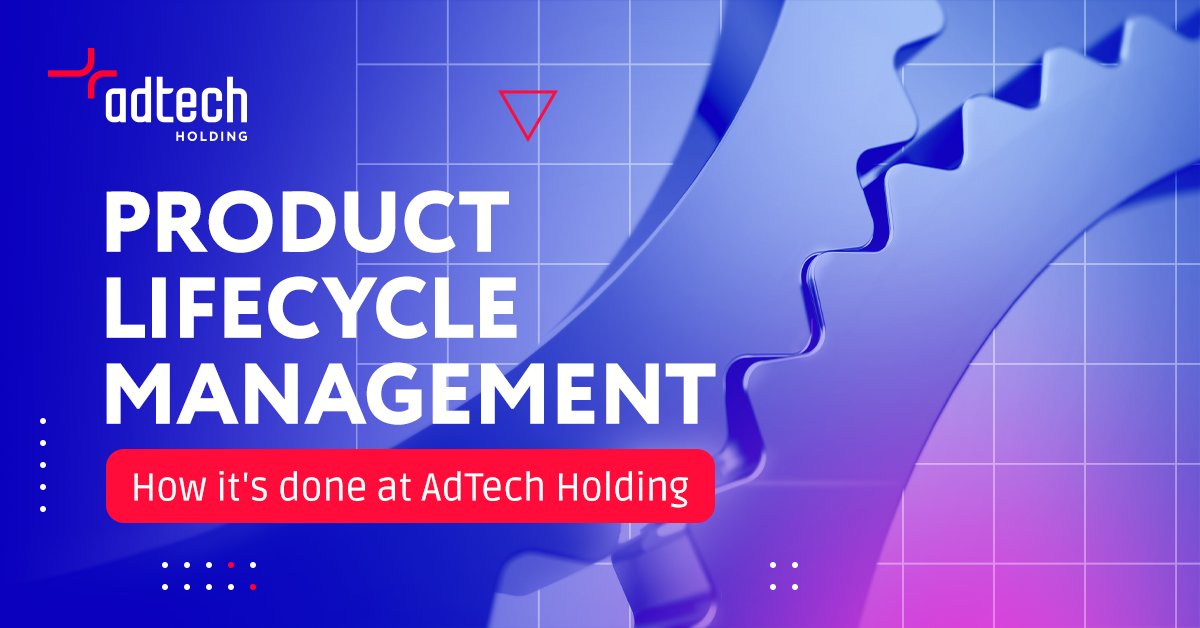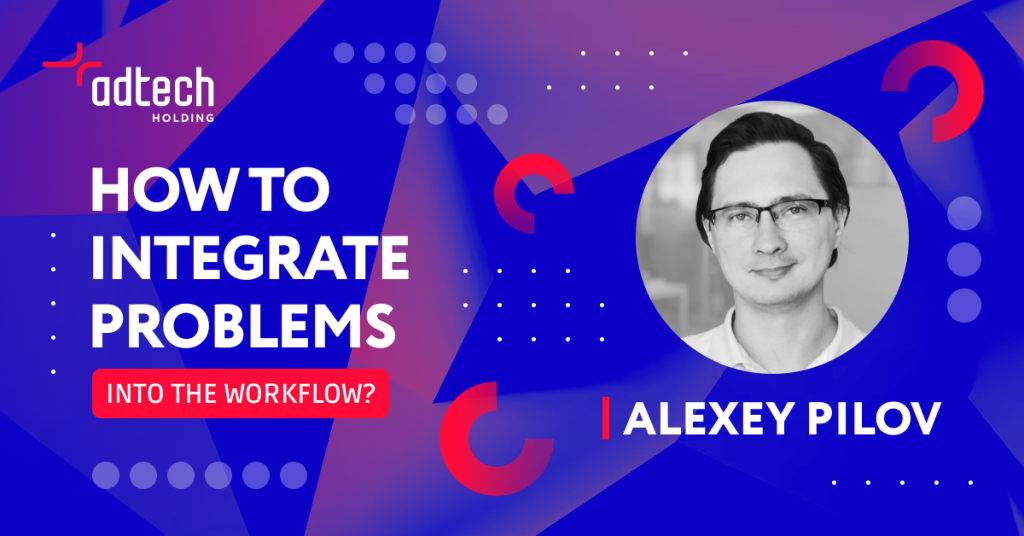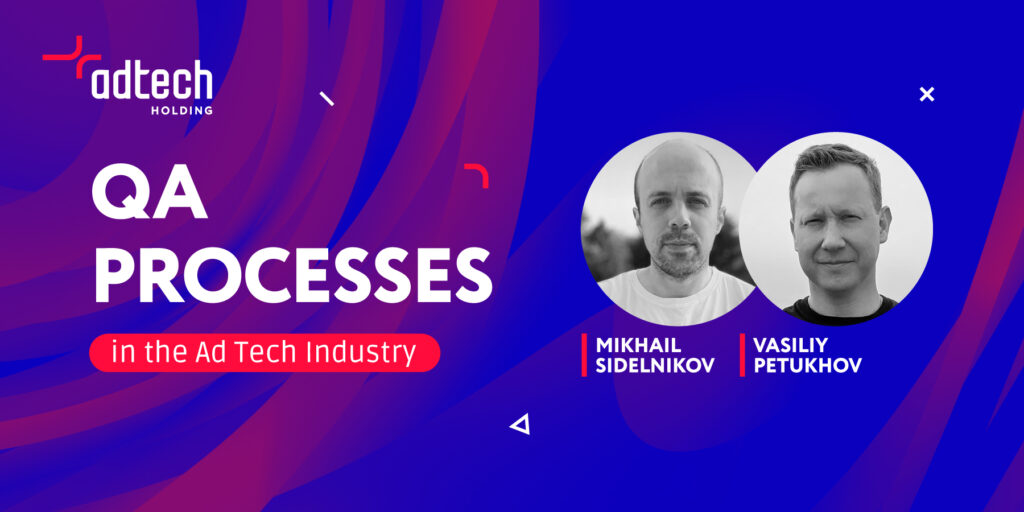Product Lifecycle Management in the AdTech Industry: How it Works?

In easy terms, Product Lifecycle Management (PLM) can be explained as an overall understanding of how every
new product or feature goes through its whole path: from the idea to the implementation. The consistent, proven, and well-built system of PLM ensures that everyone who works on a product is aware of the current goals and will avoid chaotic workflows.
What is important, is that Product Lifecycle Management does not just emerge naturally within teams and is usually the result of a strategic and systematic approach that involves implementing particular practices and tools. Today, we will show you these practices and tools in the example of PropellerAds, the multisource ad platform.
What is Product Lifecycle Management: Quick Overview of the Framework
Product Lifecycle Management (PLM) is a structured approach that implies dividing the entire lifecycle of a product into distinct stages. Here is, for example, how it can be done in offline businesses like manufacturing:
- Concept: Development of the product idea and concept in general
- Design: Detailed design, including the first product prototype and testing
- Manufacturing: Production, quality control, and supply chain management
- Distribution: Promotion, marketing efforts, sales, and customer feedback
- Service and Maintenance: Support, upgrades, and repairment work
- End-of-Life: Disposal or recycling
The cycle might differ from company to company, and each step might involve a different set of processes, tools, guidelines, and practices adopted by a particular organization.
Product Lifecycle Management in the AdTech Industry: PropellerAds Experience
Product Lifecycle Management practices are also used in software development, although they are not always referred to as PLM in this industry. Instead, there is a term Software Development Life Cycle (SDLC), which basically reflects the same concept.
Here is how SDLC, or PLM, is implemented at PropellerAds when it comes to developing new features for the users of the network’s self-service platform – system, where customers create, set, monitor, and optimize their media buying campaigns.
Stage 1. Insight
The whole process begins with receiving an insight – a piece of information about the product or market that might become essential for business.
Here is an example:
| ‘I know that many users do not actively use Push Notifications as an advertising format because they lack time or resources to generate content for push creatives.’ |
Insights can originate from outside sources—for example, user reviews or competitor research—or inside ones (team members, business processes). Whatever the source, the insight itself can not be considered an idea to implement right away, but its presence triggers the next step.
Stage 2. Discussing and forming the hypothesis
Once the insight has been gathered, the management and the teams discuss it to create an idea or a hypothesis. Here is how this hypothesis might look on the example of the insight we referred to above:
| Insight: | Hypothesis: |
| Many customers do not use Push because they cannot afford or do not have much desire to invest in creatives. | If the Push campaign settings are facilitated and the need to make creatives is eliminated, the company can significantly boost the metrics of Push campaigns. |
Of course, the hypothesis is also a subject of further discussion and research.
Stage 3. Research
This part might include various research methods that help to understand if the hypothesis is valid. Here, we will introduce the most common ones, which are widely used at AdTech Holding projects and other AdTech and MarTech companies.
- Customer Development – direct communication with potential or existing clients on the new product and feature and collecting feedback.
Georgiy Sivkov, Product Owner at PropellerAds: Conducting CustDev interviews and asking the right questions is a subtle art: you need to motivate a client to think and dive into the problem. It is important not to give any hints: if you ask a direct question sounding like ‘There is a new convenient feature to be released, would you like us to implement it?’, a user will most likely say yes without considering it much. What is more, during a CustDev interview, you can receive new insights.
- Landing page testing – a launch of a test campaign with a landing page dedicated to the feature. The result of such a campaign can be, for example, a particular number or a percentage of users who clicked the ‘I want this feature’ button on the landing page.
- Survey – quick questions regarding products or features asked to existing or potential clients.
- A/B Testing – the most expensive option because it implies creating MVP – the minimum viable product, e.g. the very first version of the product containing the basic features.
Georgiy Sivkov, Product Owner at PropellerAds: A/B testing is not always a perfect solution: for example, if you have a relatively small number of users and the experiment lacks a critical mass, the test result might be inaccurate. Besides, if we test the hypothesis this way, we risk come to a decision that the idea was not viable after we had already spent time and money on the MVP. In our practice, we usually implement A/B test-based research for minor updates that do not require many resources.
There are many more ways to conduct the research. Whatever these methods are, the results of the research stage might yield new insights or prompt a return to discussing the idea.
In the end, the team passes through the next stage, or consider the idea invalid and stop the process. Getting back to the example with Push creatives, one of the research outcomes can be the decision to implement the feature that will generate such creatives automatically.
Stage 4. Defining a Scope of Work and Planning
In case the idea is approved and confirmed, the next step is to define a scope of work and create an MVP – the minimum viable product.
| As you already know, an MVP is a product with a minimum set of features that are enough to present its main idea to users. For example, an MVP of a taxi ordering service, Uber, included a simple app that connected riders with the available drivers nearby. Speaking about the new features of a particular product, such as a new advertising format, they can also have their MVP version. For example, the MVP of the Push Notifications format only included access to the particular traffic source and creatives format, but later, it received novel elements like auto creatives, badges, custom audience targeting, and more. |
To create the minimum viable product, it is essential to define what particular tasks must be performed and what teams must be involved. After this is confirmed, the quarterly planning begins.
Georgiy Sivkov, Product Owner at PropellerAds: We do not usually strive to set strict deadlines that are fixed in stone and remain flexible enough to have time for urgent or unplanned tasks, too.
Stage 5. Implementation
This stage involves performing the actual planned scope of work. This scope includes all the paths from software development and quality assurance to PR and marketing activities.
This stage can potentially reveal planning mistakes, when it becomes clear the implementation requires more resources or there are tasks, ideas, and insights that should have been prioritized over the current one. Once this happens, the idea can be put on hold, which can also be done easily if the approach is flexible enough.
Stage 6. Collecting Data
The overall cycle usually takes three months, which is convenient to fit in the quarterly planning. In a perfect scenario, the testing of the new feature and collecting customer and analytical feedback should take a month. This way, the test results will allow to make new plans for the further feature development for the next quarter.
The data collected after the testing creates a new insight. It can show the idea was a mistake overall or, on the contrary, requires further discussion, bigger investment, and consecutive work.
Here is how the overall PLM cycle looks:

Software and Tools Used for Project Lifecycle Management
The management tools and software differ in various companies. For example, some implement special PLM tools that allow to create product roadmaps (ProductBoard or ProdPad).
Overall, the experience shows that the processes can be smoothly build with a relatively standard set of modern team management tools:
- Zoom calls for weekly and quarterly meetings to track the progress – in case of remote employees
- Jira – an app for convenient and transparent access to tasks and their progress tracking
- Slack is a corporate messenger for internal communication among employees.
Summary
In general, the discussed approach is not at all unique: this is a proven concept of software development lifecycle adopted by many companies in various niches. In our unpredictable world, where anticipating every outcome is a sort of a luxury, such a concept ensures a structured but agile enough workflow.





